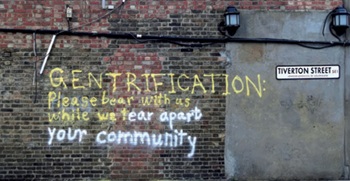Future purchasers and tenants
To help develop this article, click 'Edit this article' above.
The original developer and often the first purchaser or tenant of a property will have an opportunity to enter into direct contractual arrangements to protect themselves against latent defects. It is unlikely that subsequent purchasers or tenants will have such an opportunity, unless they fall within the scope of the Contracts (Rights of Third Parties) Act 1999, and they will be (adopting the terminology of the rule of privity of contract) strangers to the original contractual arrangements with no remedies in contract against the parties responsible for the design and construction of the building.
The courts have often said in such circumstances that the law of contract provides for a chain of indemnity connecting the ultimate user with the original producer: for example D is the ultimate user or consumer who purchased from C the retailer, C having purchased from B the wholesaler and B having purchased from A the manufacturer. D can sue C for breach of contract but not B or A. However, if C is sued by D, then C will have a right of indemnity against B who in turn has a right of indemnity against A, creating 'the chain of indemnity' that links the manufacturer to the ultimate user.
Unfortunately, the strength of a chain of indemnity is only as great as its weakest link. If C the retailer becomes insolvent a critical link in the chain between D and A will have been broken. Further, a purchaser of a freehold building is faced with the difficulty of the principle of ‘caveat emptor’ (buyer beware) and the tenant of a leasehold building with the difficulty of full repairing covenants in the lease.
The future purchaser or tenant must rely on derivative contractual rights. Such rights arise by assignment, which is a unilateral act, or by novation that is synallagmatic (each party is bound to provide something to the other party – see Essentials of a contract).
[edit] Find out more
[edit] Related articles on Designing Buildings Wiki
Featured articles and news
A threat to the creativity that makes London special.
How can digital twins boost profitability within construction?
The smart construction dashboard, as-built data and site changes forming an accurate digital twin.
Unlocking surplus public defence land and more to speed up the delivery of housing.
The Planning and Infrastructure bill oulined
With reactions from IHBC and others on its potential impacts.
Farnborough College Unveils its Half-house for Sustainable Construction Training.
Spring Statement 2025 with reactions from industry
Confirming previously announced funding, and welfare changes amid adjusted growth forecast.
Scottish Government responds to Grenfell report
As fund for unsafe cladding assessments is launched.
CLC and BSR process map for HRB approvals
One of the initial outputs of their weekly BSR meetings.
Architects Academy at an insulation manufacturing facility
Programme of technical engagement for aspiring designers.
Building Safety Levy technical consultation response
Details of the planned levy now due in 2026.
Great British Energy install solar on school and NHS sites
200 schools and 200 NHS sites to get solar systems, as first project of the newly formed government initiative.
600 million for 60,000 more skilled construction workers
Announced by Treasury ahead of the Spring Statement.
The restoration of the novelist’s birthplace in Eastwood.
Life Critical Fire Safety External Wall System LCFS EWS
Breaking down what is meant by this now often used term.
PAC report on the Remediation of Dangerous Cladding
Recommendations on workforce, transparency, support, insurance, funding, fraud and mismanagement.
New towns, expanded settlements and housing delivery
Modular inquiry asks if new towns and expanded settlements are an effective means of delivering housing.






















